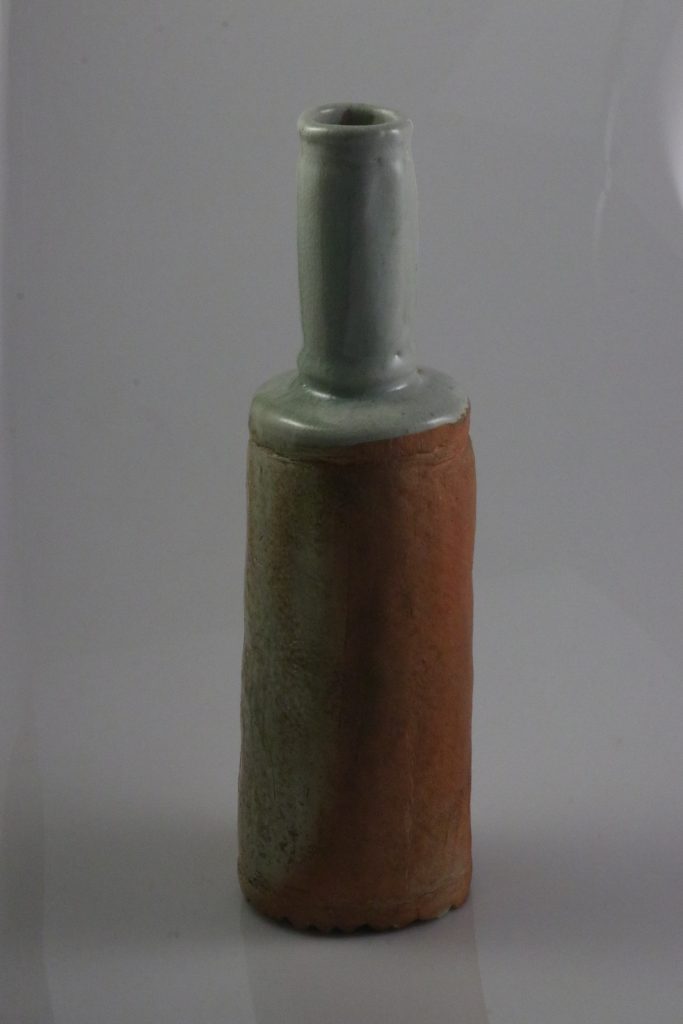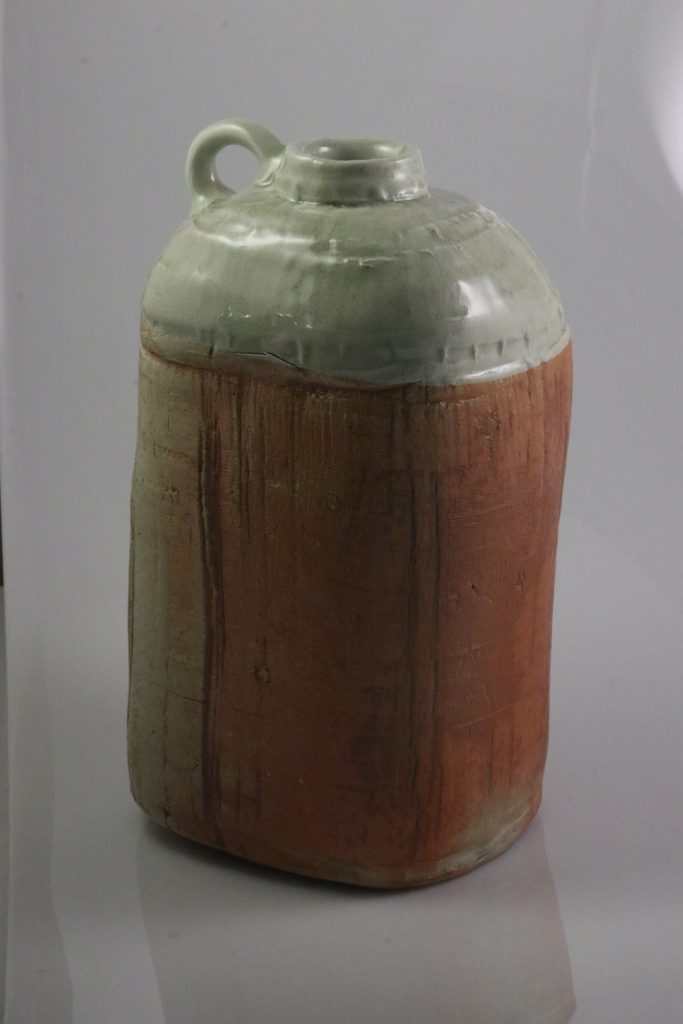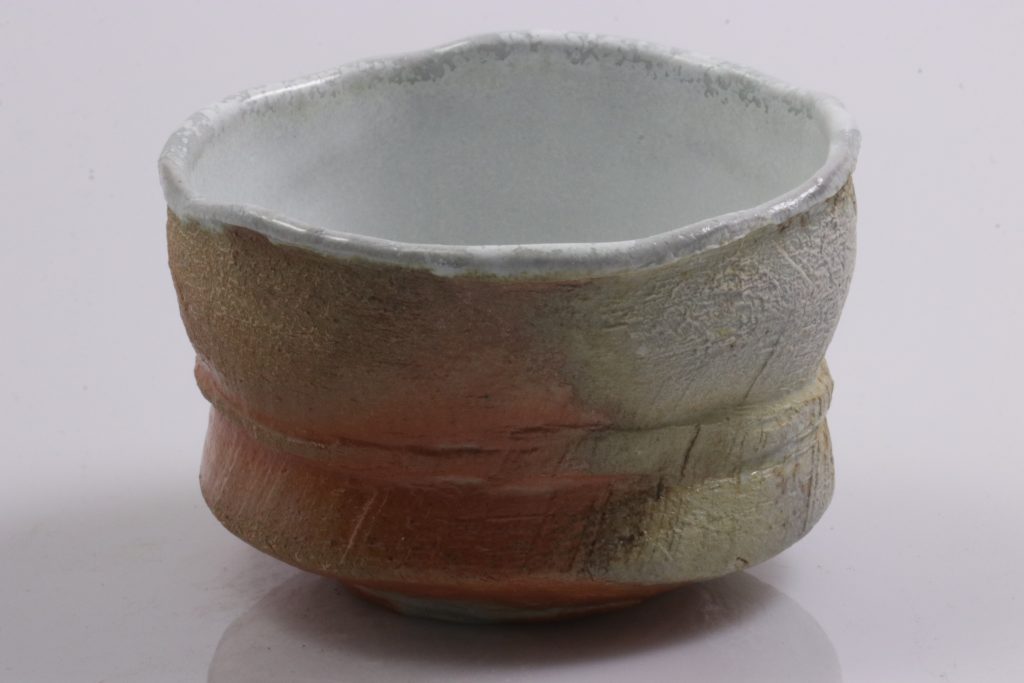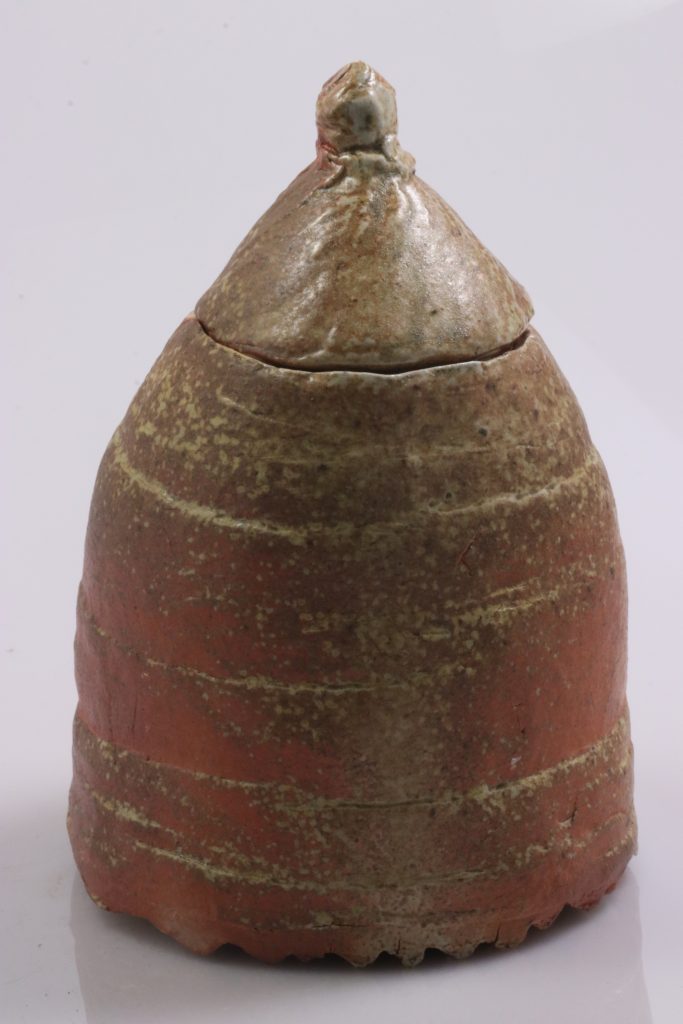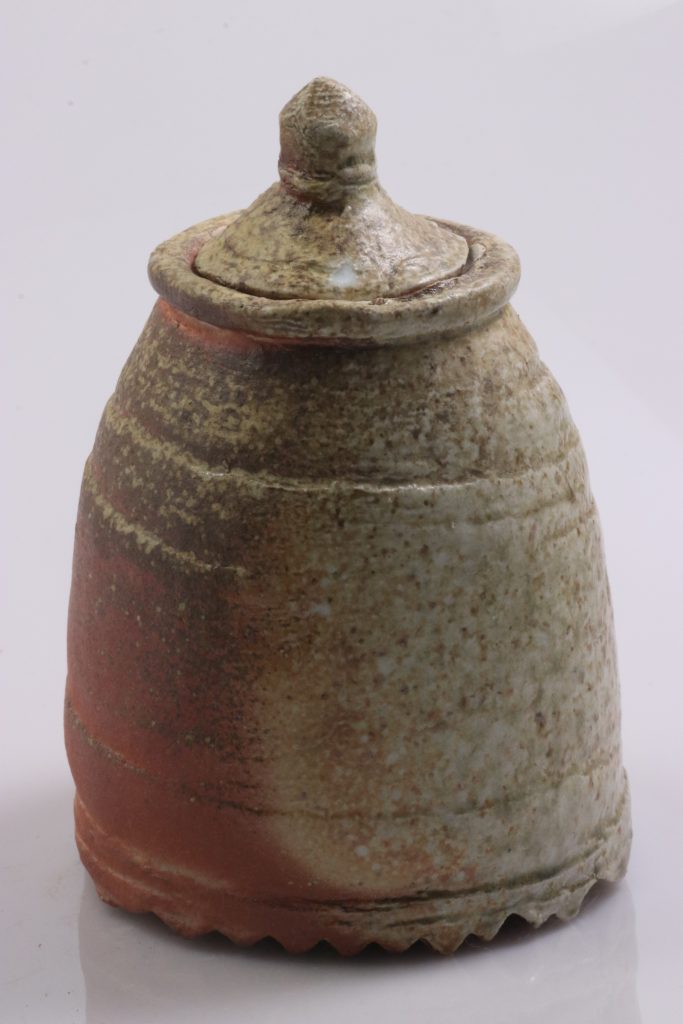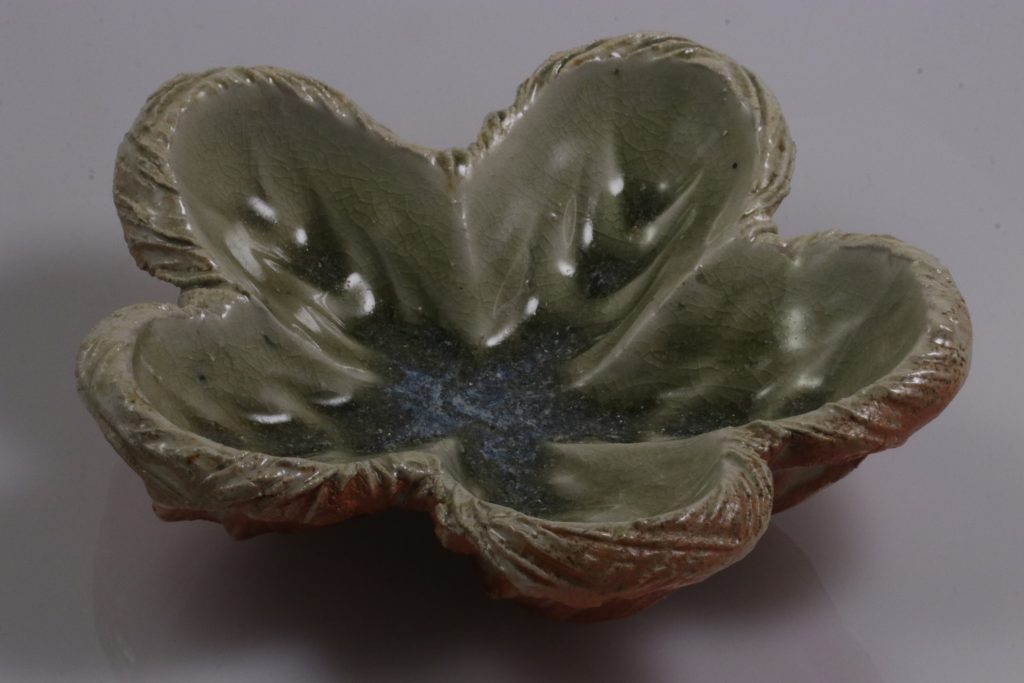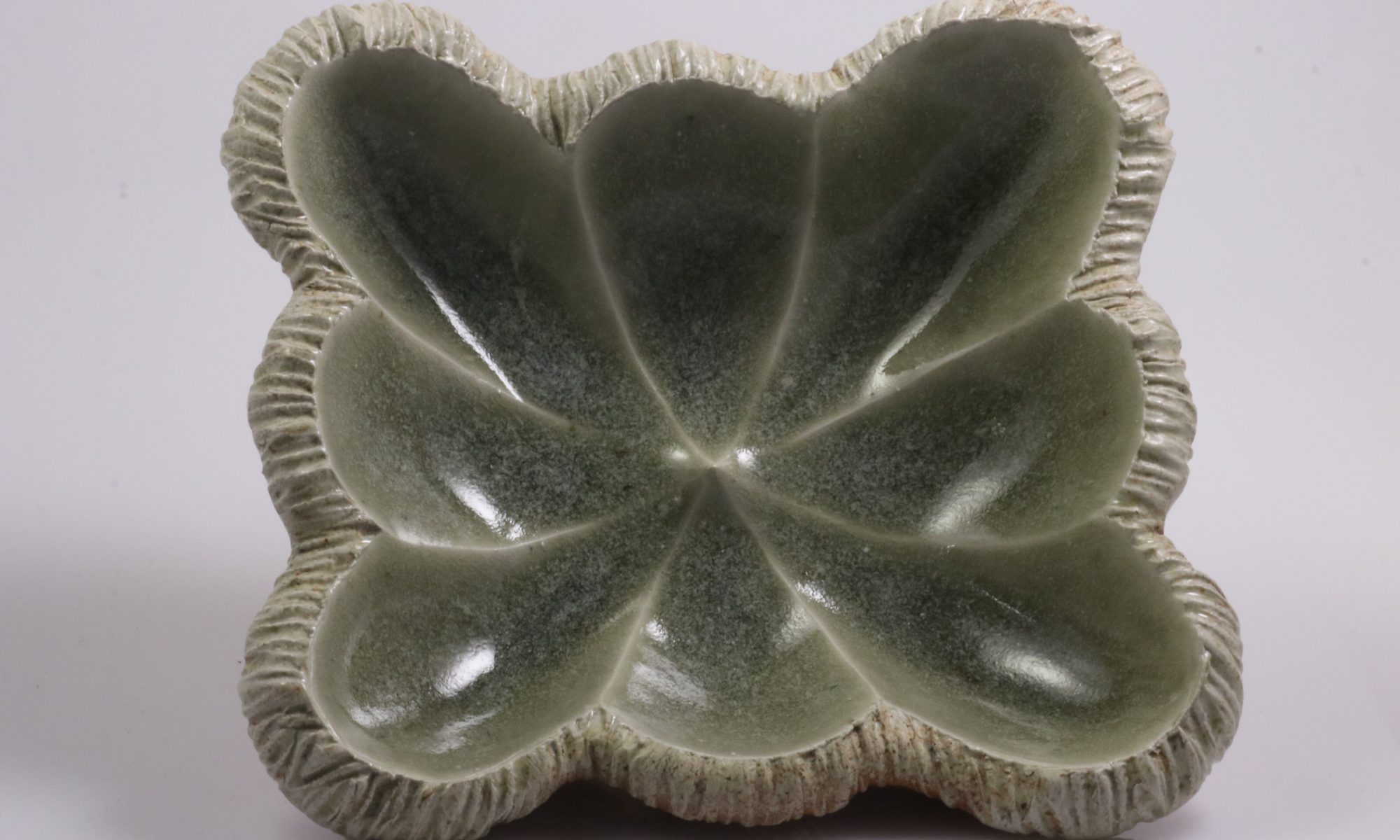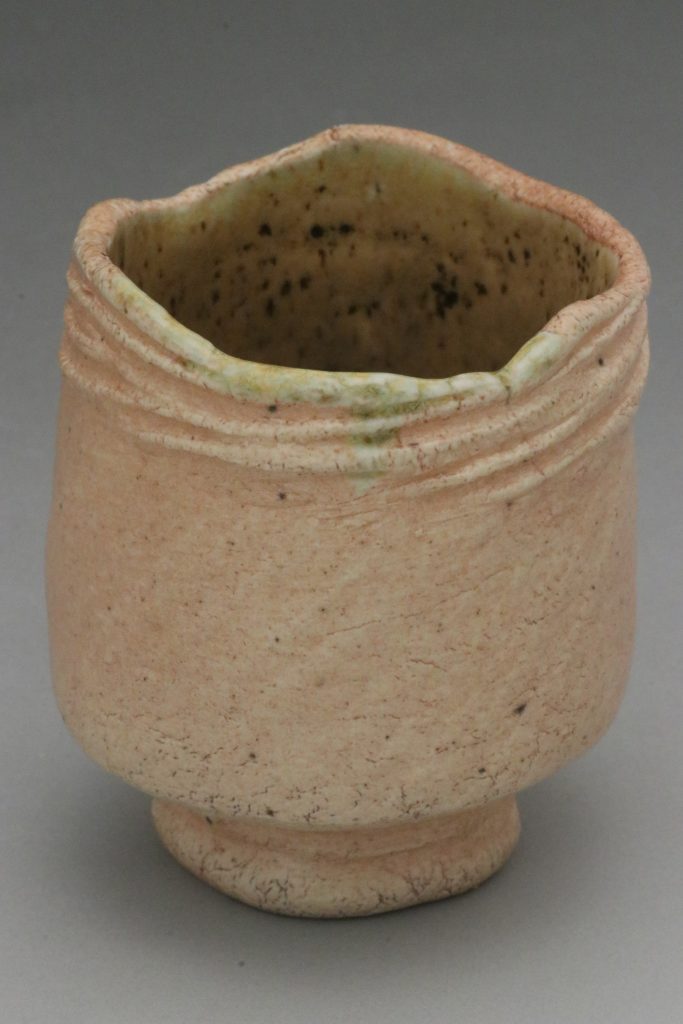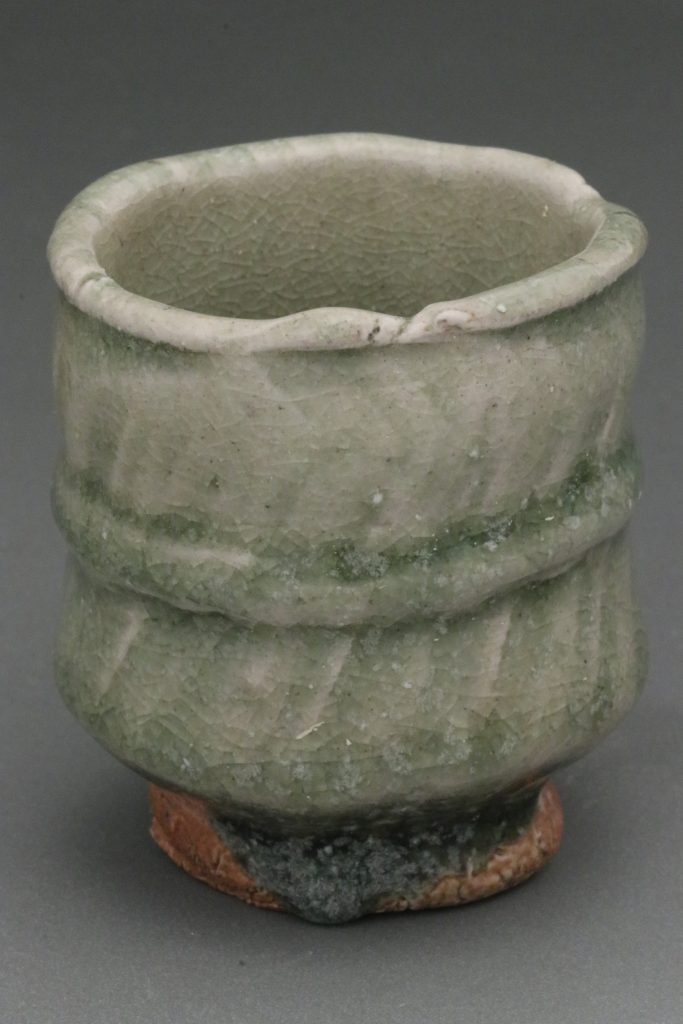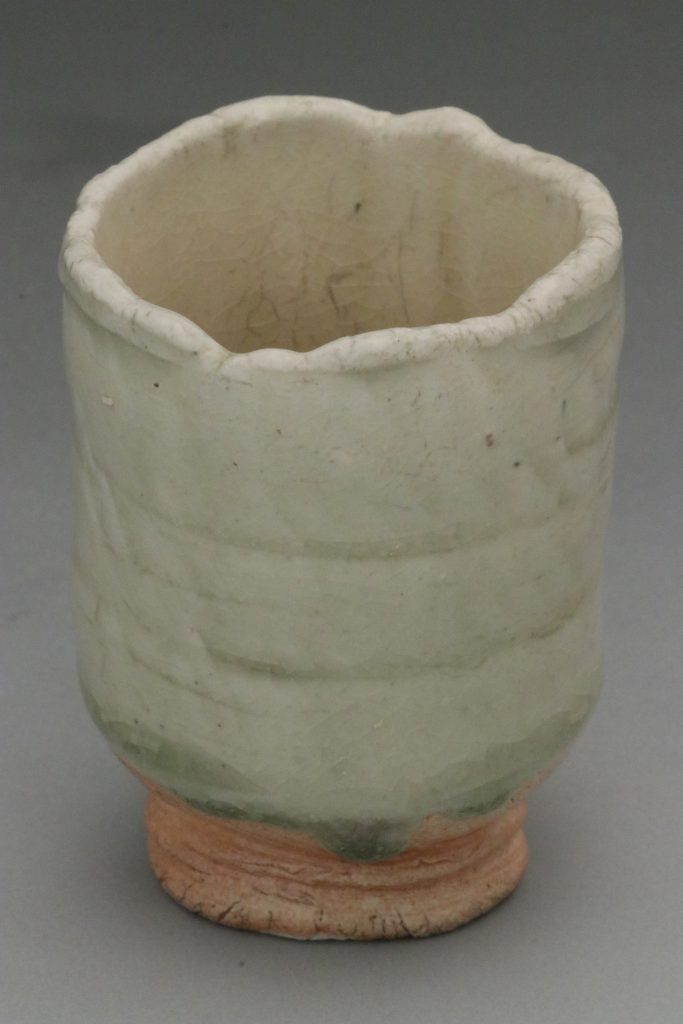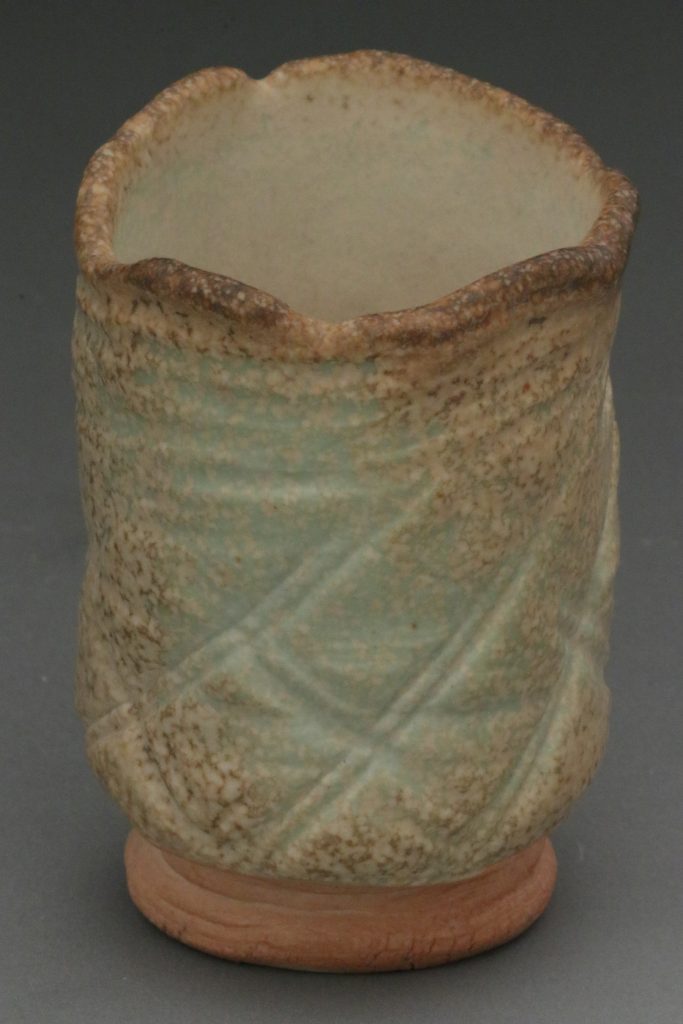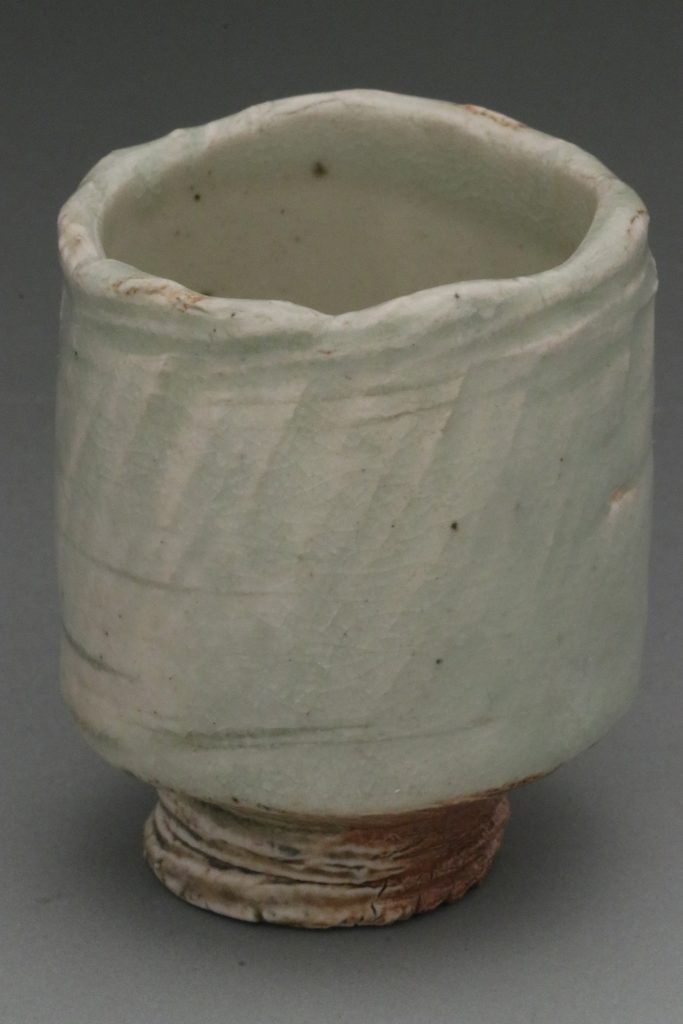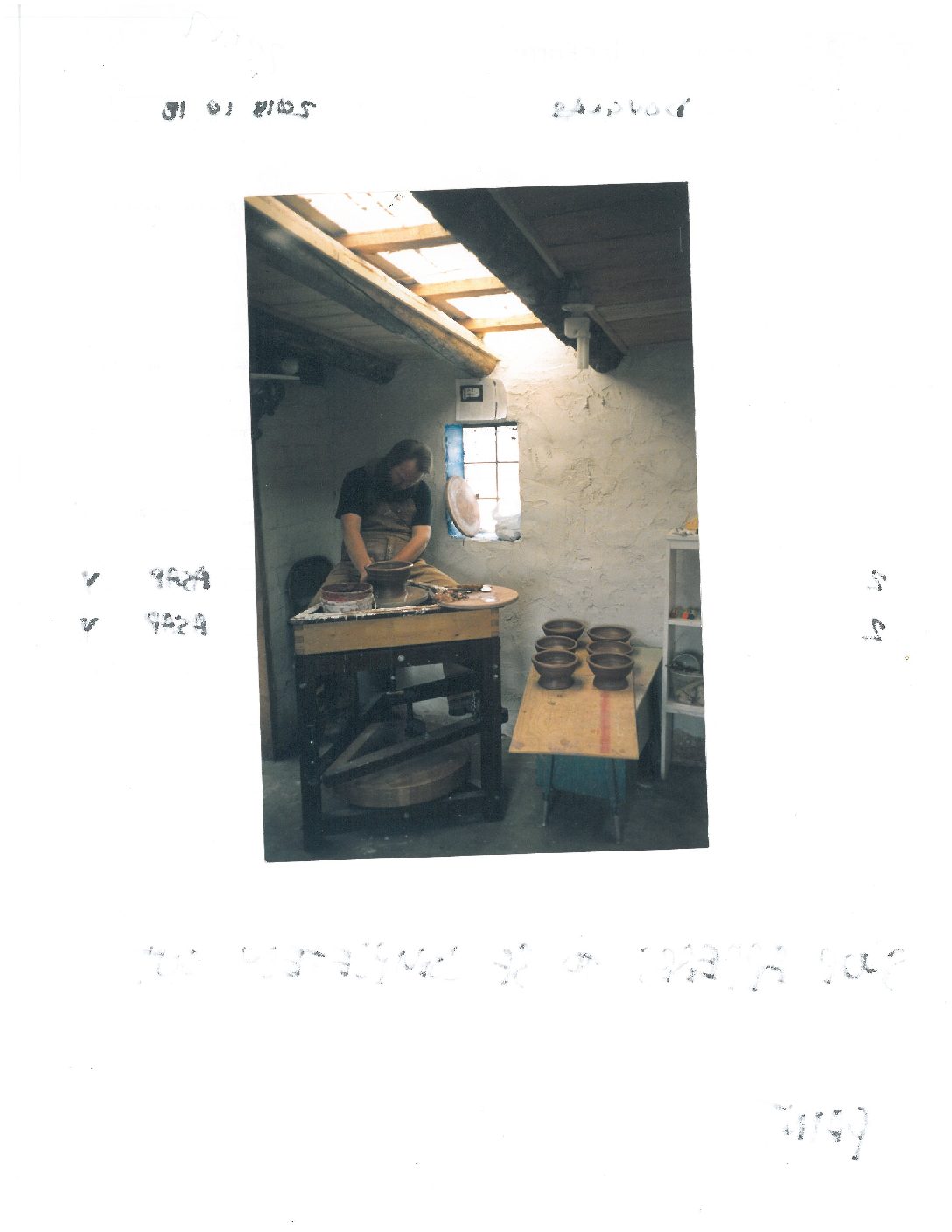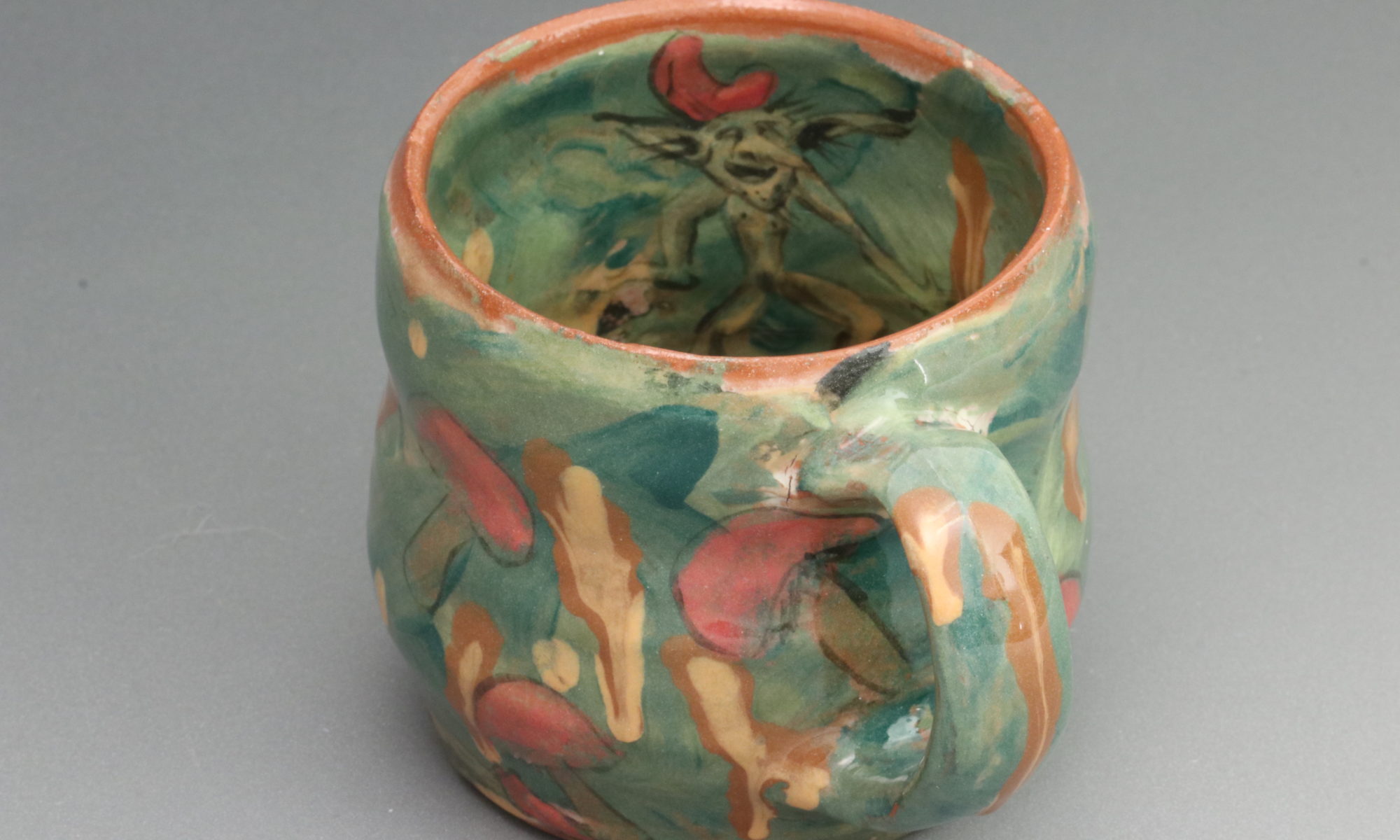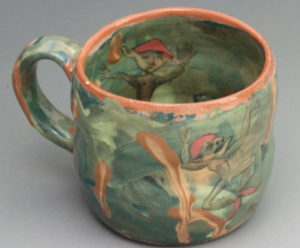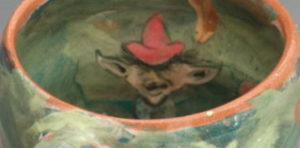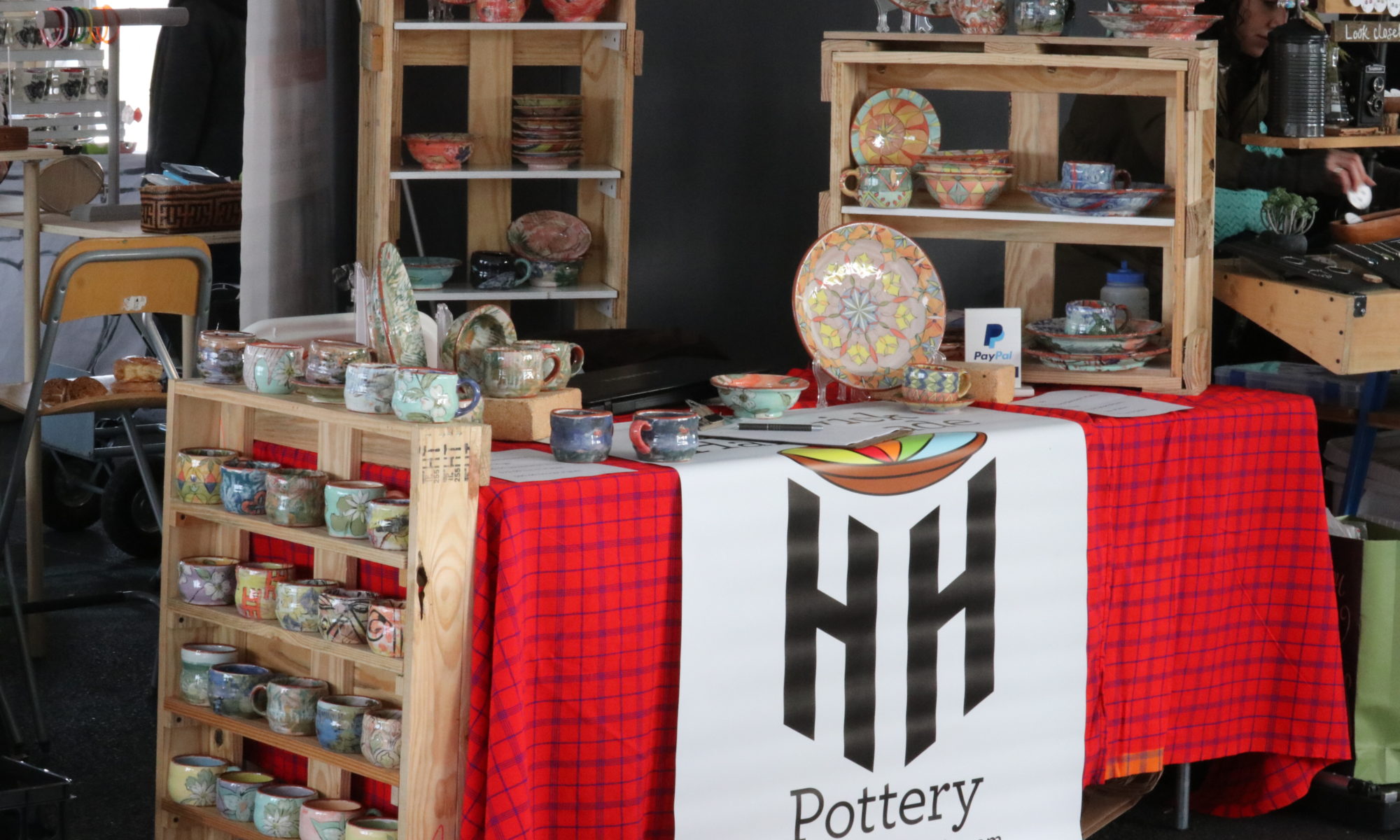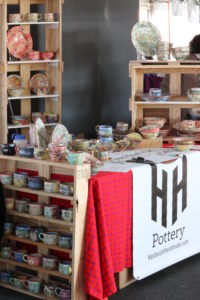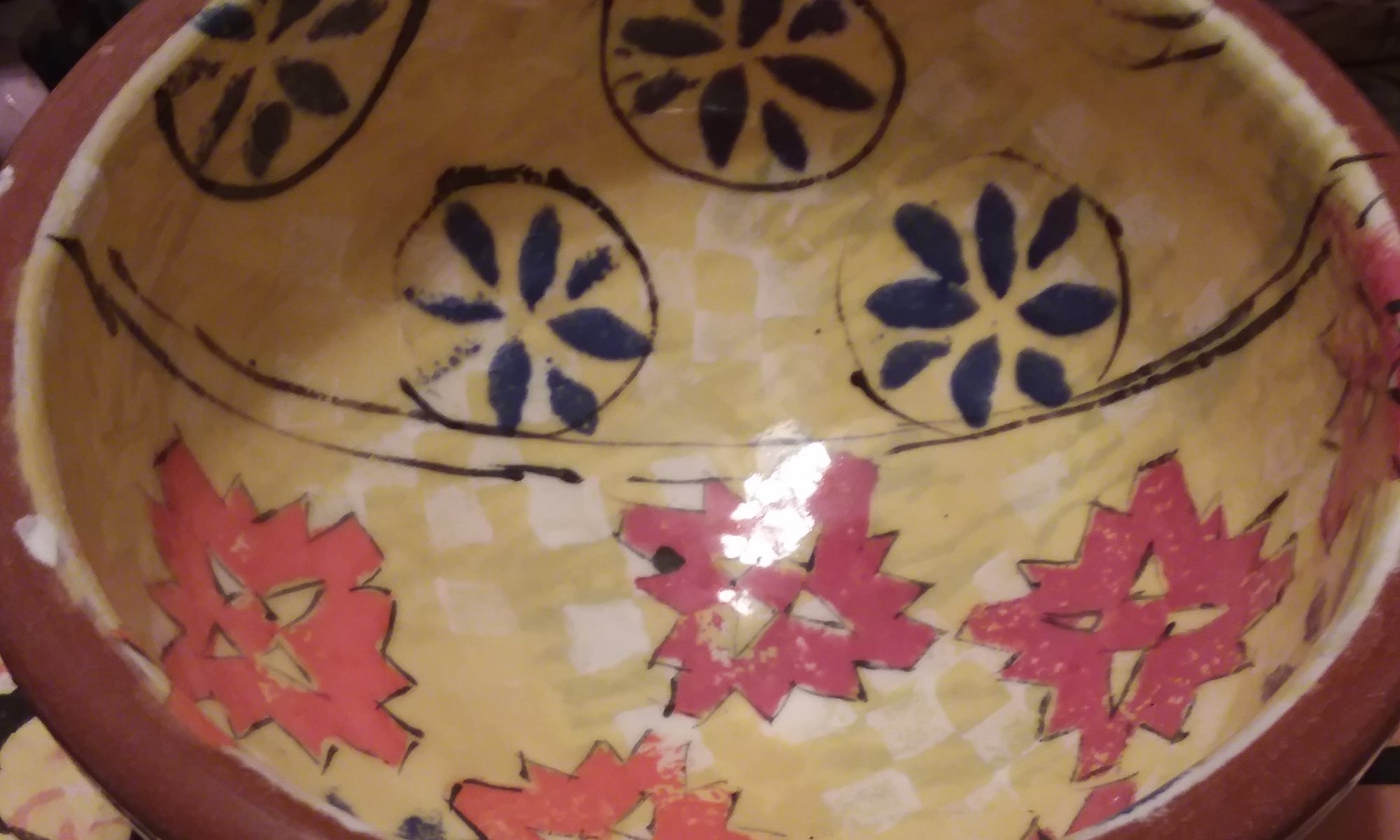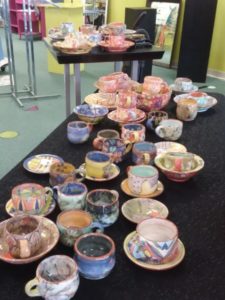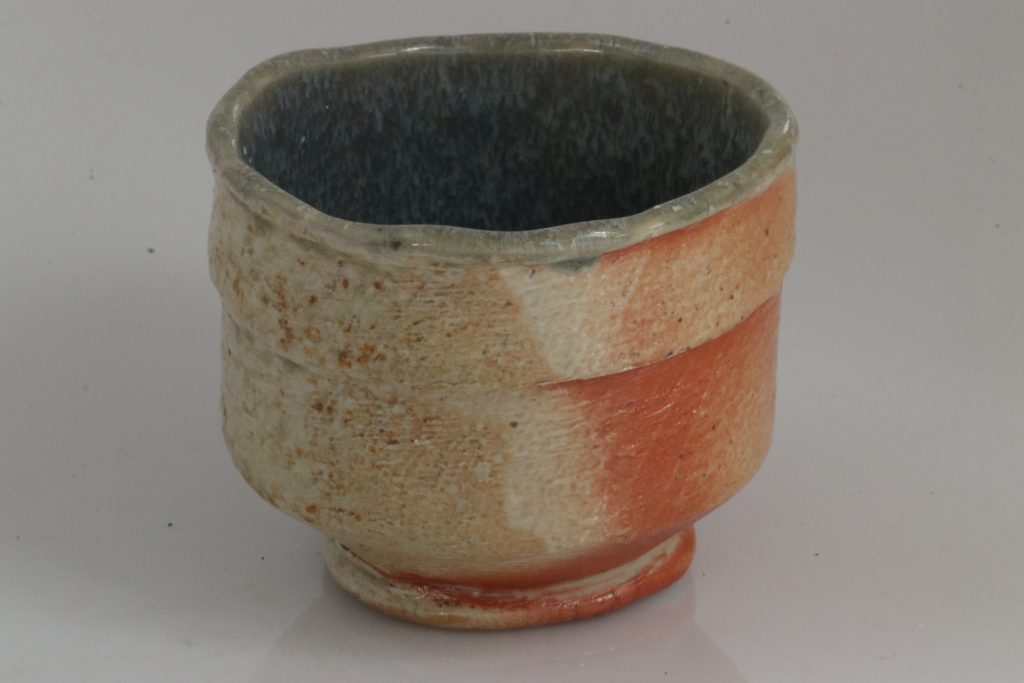
I’m still chasing firing this kiln the way I imagine my glazes and flashing clay body will work the best, but this was another great firing in a kiln that just keeps producing quick, fairly even results. Firing went 12-14hrs in this down draft bourry box kiln. We used mixed wood, but mostly oak cut as firewood, which is unheard of firing a kiln from start to finish. Smaller wood would have helped build heat at the end with less coals build up, but we used big chunks the whole way and it worked.

We fired to cone 8/10 with cone 12 on the bag wall. I called the firing a little too early and my work in the cone 8 areas were too cold for the glaze to melt, but overall my work looked good and I only lost a small percentage due to underfiring. The end of the firing turned into “throw everything into the firebox and see what happens”, and we ended with a pretty even kiln top to bottom and side to side. I wish I had the forethought to allow the kiln to sit at the peak temperature for 30min or so and then close it off, but now I know that my glazes need cone 9 down to work.
My hope in firing is to do an early reduction at cone 012 and that was accomplished, but then I want no late reduction which I think will make my glazes pop. What I did learn is that my flashing clay bodies do not care if they have late reduction and maybe, they even like it. I hope next firing to reduce early and then keep a neutral/light reduction all the way up to completion. Coal raking needs to stop at cone 7/8 to eliminate dry patches on pots and smaller fuel needs to be utilized at the end to keep the fire box clear and the coals small enough to allow the necessary air.

The flashing on these pots was the 2nd best I have seen. The better firing was due to wet wood and nail accumulation due to using pallet wood for half the firing. Now that we don’t use pallets and there are no nails the firings have been steady heat building until the kiln is a rocket ship that has difficulty slowing down.
Flashing was red on both the EPK and Grolleg bodies with about 1% iron in them. The high silica test body flashed brown/red and went white with too much ash build-up. It slumped at cone 12 on the bag wall. The basalt body flashed brown with slight deep red flashing at cone 12 on the bag wall. The basalt created black spots, so the test needs to be redone with pumice substituted for the basalt or the basalt needs to be bisqued and then crushed into smaller powder for better results. As shown below the store bought clay I used for drip tiles did not flash, but went darker brown. On the right are 2 or 3 different flashing clay bodies I manufactured that went a true red in this firing. Early reduction was for 2 hrs with neutral/light reduction to cone 7, then moderate to heavy reduction to cone 10.

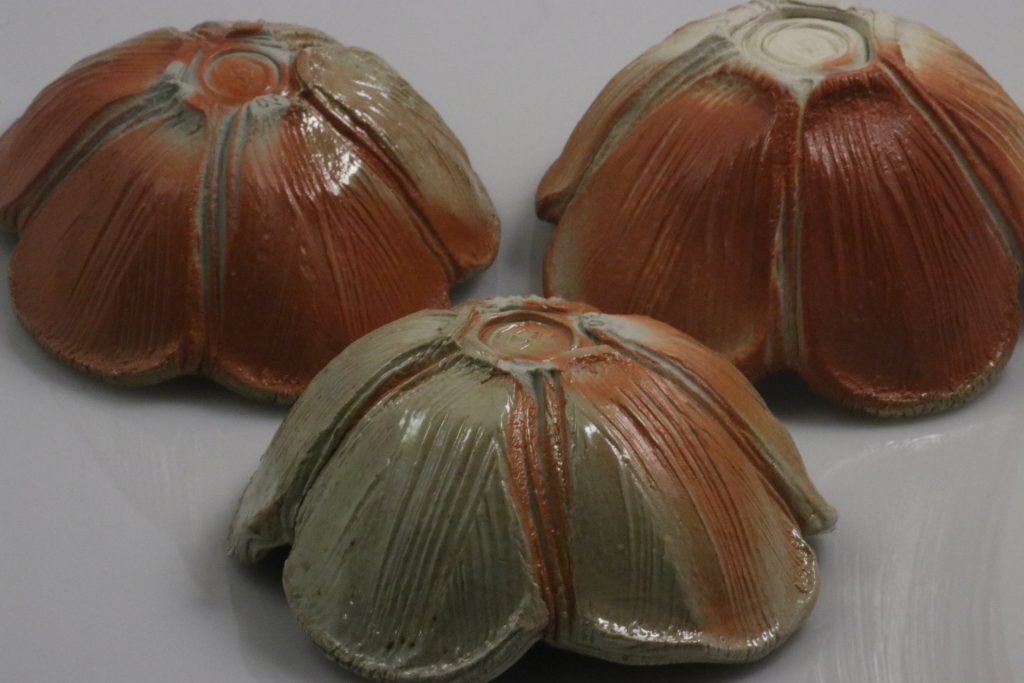
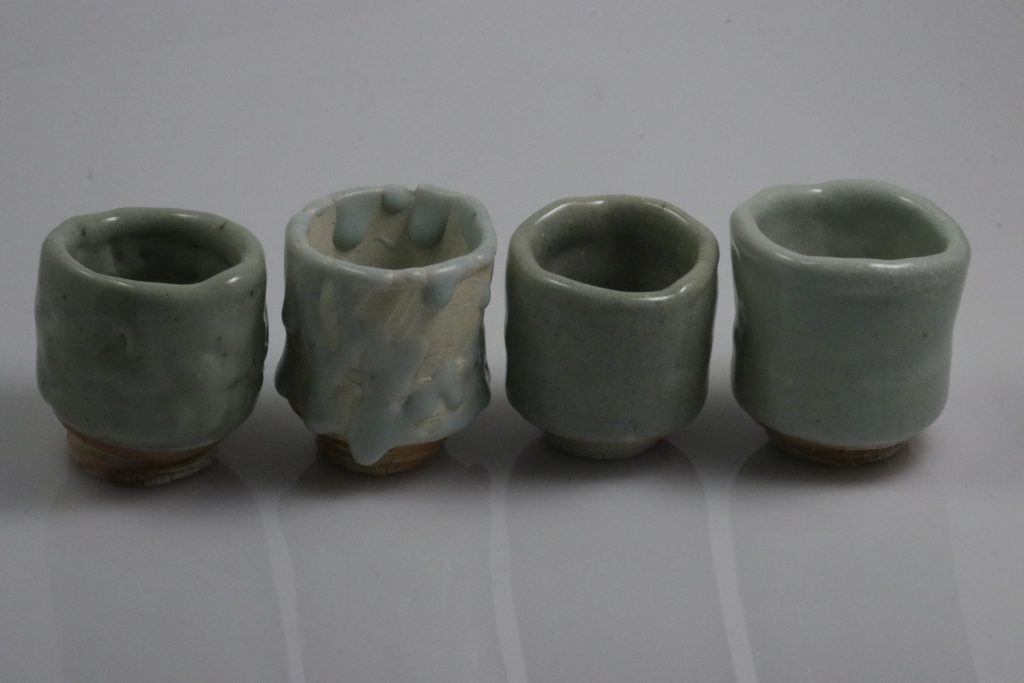
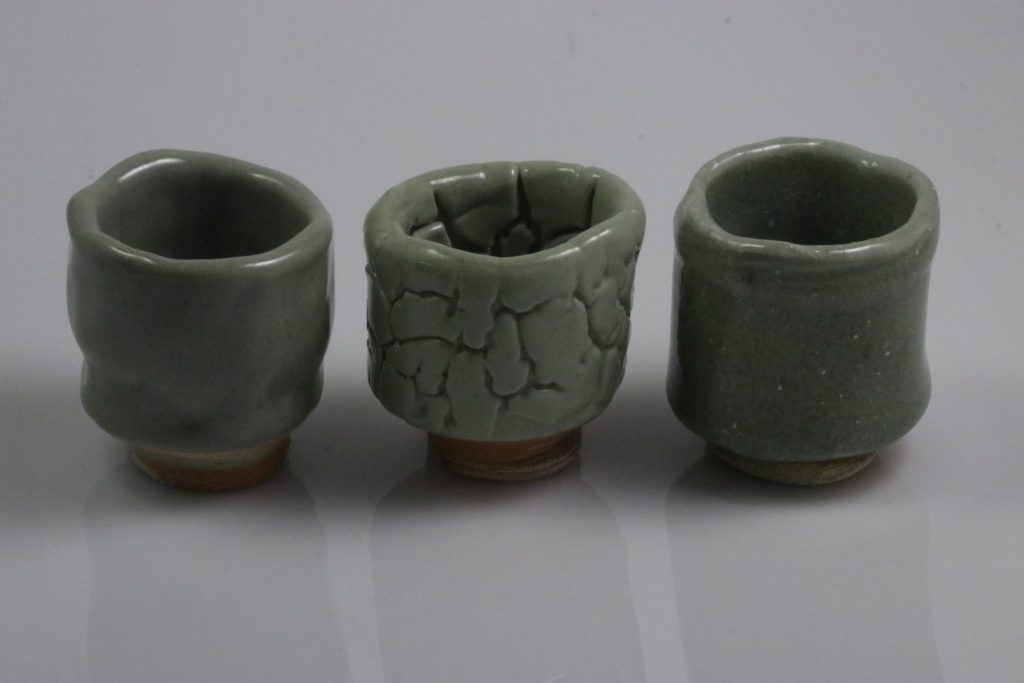
The 7 test cup glazes were as follows: Robin’s Egg, Ru, Chai, Blue Longquan, Dayao 1, Dayao 2, Hangzhou-Guan. These glazes were chosen as they all have high quantities of Grolleg porcelain as an ingredient in their recipes and exhibit crawling as a result. The test was to glaze them each, bisque them and then glaze them a second time to see if the crawling would stop. The crawling did stop on all of the first pre-bisqued coatings except for #1 &2. #6 crawled on the post-bisque coating, but not the pre-bisque coating. The other glazes worked, though some were slightly underfired.
- Robin’s Egg- This glaze was slightly underfired, though it has been beautiful in other firings where it went to cone 10. My guess is the samples in this firing all went to cone 8 and did not reach maturity. Samples that did not have a pre-bisque coating crawled like crazy. interior of this cup crawled extensively with bare patches that were not flashed, so glaze either moved after early reduction or glaze became glass before late reduction. Possible there was little reduction in this back area of kiln, but foot of cup has flashing on it. Glaze needs to have 100% calcined Grolleg in recipe and more tests will need to be done if the 100% calcined kaolin does not solve issue. it is possible that fast firing cracks the glaze so that it cannot repair itself in the late stages of the firing.
- Ru- Both layers of glaze crawled extensively. Glaze surface was perfect at cone 8/9, but crawling ruined most samples. Drips of glaze show that maturity was reached. Cone 12 samples of this glaze did not all crawl. Glaze must have evened out at higher temp, but glaze goes shiny and white frosting or foamy appearance accumulates in thick areas. Beautiful both ways, but glaze crawling destroys effected pieces. 100% calcined Grolleg kaolin needs to be used to reduce crawling. Bentonite or Epsom Salts will need to be altered as there will be no clay to keep glaze suspended. Cone 9 seems to be perfect temp for this glaze.
- Chai- I liked old version of this glaze better, though this sample looks pretty nice. Thick 2nd coating stayed consistent overall and was not too green as in previous firings, but inside bottom of cup showed dark green pools, so maybe gray coloration was due to underfiring. Dark green coloration looked to be in pooled wood ash areas in bottom of cup. Crawling was non-existent, but cup looked slightly underfired. Needs a good cone 9 down. White specks may be calcined Grolleg, so glaze needs to be double screened or 100mesh screened (I only did 80mesh). Crazing was heavy where wood ash hit it, with possible fish scaling where wood ash was thickest. I think this version of the glaze accidentally has 1% iron put into it instead of the .25% indicated in the recipe, so next version should have 100% Grolleg kaolin with no iron added, to lighten this version. Maybe, mix up the old version with 100% Grolleg and add to this version to see if iron is okay. Old version was more like Ru in surface quality, but was white as there was no iron added to it. Somewhere in the middle is probably perfect in color and surface.
- Blue Longquan Celadon, Southern Song #2- Looked good as is, but is a little underfired to get true color. This test looked gray, but there was minimal crawling which should be fixed with hotter firing. Close to a true Guan with wide craze lines. Earthworm tracks shown where glaze drying cracks did not fully close up. Cone 9 needs to be down, otherwise glaze will work as is. 100% calcined Grolleg will help once I get enough of it to use, but pre-bisque and post-bisque glazing works for this glaze.
- Dayao 1- Glaze was too green with slight clumping shown where glaze was between crawling and healing. I’d say sample was slightly underfired and has a little too much iron in it, but can’t really tell about the iron without additional tests. pre-bisque seemed to solve crawling.
- Dayao 2- Glaze was failure with thin coating of pre-bisque not crawling and thick coating post-bisque crawling like mad. Glaze recipe has already been altered for next kiln firing. Test is also too green, but again it could be that underfiring it caused coloration. Another test to temperature should be done.
- Hangzhou-Guan- Test looks to not be mixed thoroughly. White flecks indicate it needs to be screened again at 80mesh or taken to 100mesh. More gray may be due to underfiring, but surface looked good. Pre-bisque glazing worked well here and glaze does not need to be altered, though the color may be too green, so iron may need to be halved. Another test needs to be done to know.

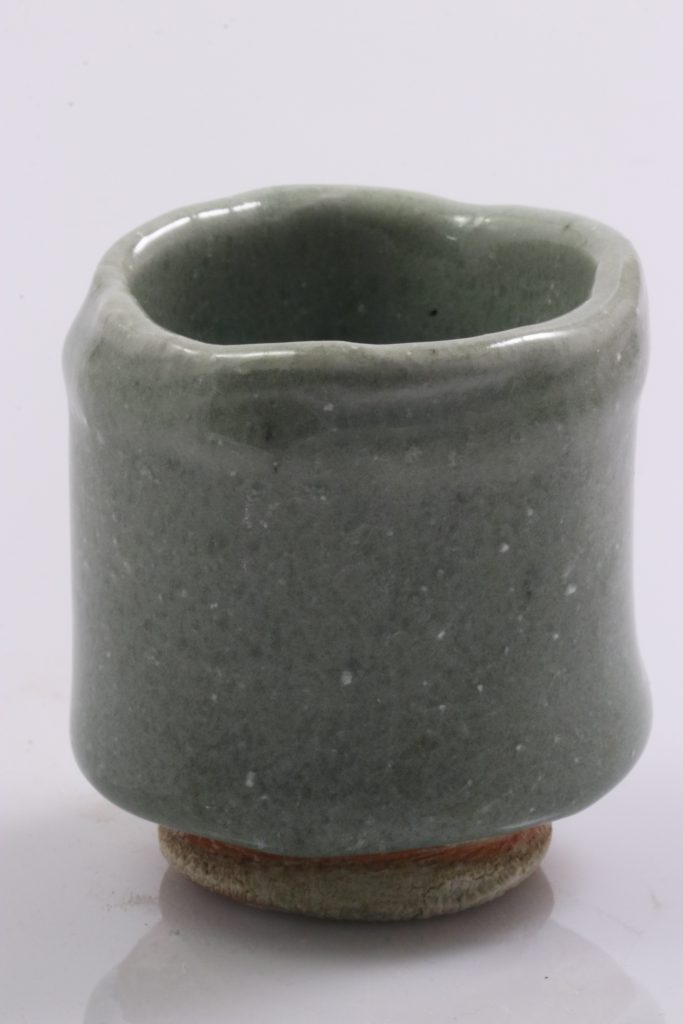
Of the pre-bisqued glaze tests the above are my two favorites. The Chai test #3 also looked good, but it was a little too anemic and shiny. The Blue Longquan has a great satin surface and the Hangzhou- Guan is so fat and smooth I’m not sure which I like better. If they had both been fired a little hotter or held at temp for another half hour, they may have been perfect, but overall I like what happened on these two.
Other pots that came out well are below. Captions show some are new forms and some just got that kiss of the kiln that sets them apart.
